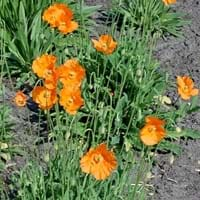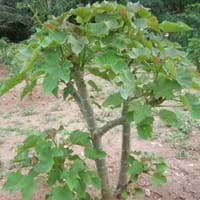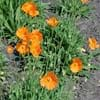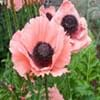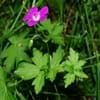Life Span
Perennial
Perennial
Type
Flowering Plants
Shrubs, Spurge
Origin
Northern Africa, Morocco
Caribbean, Central America, South America, Madagascar, South Africa
Types
Not Available
Jatropha bullockii, Jatropha cinerea, Jatropha excisa
Number of Varieties
Not Available
Habitat
gardens, Grassland, Roadsides, tropical environments
Pastures, Roadsides, Warmer regions
USDA Hardiness Zone
6-8
Not Available
AHS Heat Zone
8-4
Not Available
Sunset Zone
2b, 3a, 3b, 4, 5, 6, 7, 8, 9, 14, 15, 16, 17, 18, 19, 20, 21, 22, 23, 24
Not Available
Habit
Clump-Forming
Upright/Erect
Flower Color
Orange
White, Yellow, Red, Purple, Pink
Flower Color Modifier
Bicolor
Not Available
Fruit Color
Not Available
Light Green, Lime Green, Yellow, Green, Ivory
Leaf Color in Spring
Light Green, Gray Green
Green, Dark Green
Leaf Color in Summer
Light Green, Gray Green
Green, Dark Green
Leaf Color in Fall
Light Green, Gray Green
Green, Dark Green
Leaf Color in Winter
Not Available
Green, Dark Green
Leaf Shape
Egg-shaped
Palmately Lobed
Plant Season
Spring, Summer
All year
Sunlight
Full Sun, Partial Sun
Bright direct sunlight, Full Sun, Partial Sun
Growth Rate
Medium
Medium
Type of Soil
Loam, Sand
Dry, Sand
The pH of Soil
Neutral, Alkaline
Slightly Alkaline
Soil Drainage
Well drained
Well drained
Bloom Time
Late Spring, Early Summer, Summer, Late Summer
All year
Tolerances
Not Available
Drought
Where to Plant?
Container, Ground, Pot
Ground
How to Plant?
Seedlings
Seedlings, Transplanting
Plant Maintenance
Medium
Low
Watering Requirements
Form a Soil ring to water efficiently, Requires consistently moist soil, Requires regular watering, Water Deeply
Needs less watering, Water occasionally
In Summer
Lots of watering
Drought Tolerant, Average Water
In Spring
Moderate
Less Watering
In Winter
Average Water
Less Watering
Soil pH
Neutral, Alkaline
Neutral
Soil Type
Loam, Sand
Loam, Sand
Soil Drainage Capacity
Well drained
Well drained
Sun Exposure
Full Sun, Partial Sun
Bright direct sunlight, Full Sun
Pruning
Remove damaged leaves, Remove dead branches, Remove dead leaves
Prune for shortening long shoots, Prune if you want to improve plant shape
Fertilizers
All-Purpose Liquid Fertilizer
All-Purpose Liquid Fertilizer, No fertilizers needed
Pests and Diseases
Red blotch
Anthracnose, Leaf spot, Powdery mildew, Red blotch, Rust
Plant Tolerance
Drought
Drought, Drought and Salt, Heat Tolerance
Flower Petal Number
Single
Single
Foliage Texture
Medium
Bold
Foliage Sheen
Matte
Not Available
Attracts
Not Available
Bees, Flying insects, Hoverflies
Allergy
Skin irritation
allergic conjunctivitis, Eye irritation
Aesthetic Uses
Showy Purposes
Not Available, Not Used For Aesthetic Purpose
Beauty Benefits
Not Available
Good for skin and hair, Removes pimples, Skin inflammation, Skin irritation
Edible Uses
Yes
Sometimes
Environmental Uses
Air purification
Air purification, Insect Repellent, No fertilizer, pesticides, or herbicides needed, Suppresses or replaces native plants, Versatility
Medicinal Uses
Not Available
anti-allergy, epilepsy, Fever, Skin irritation, Skin Redness
Part of Plant Used
Whole plant
Leaves, Sap, Seeds, Stem
Other Uses
Culinary use, Employed in herbal medicine, Showy Purposes, Used as Ornamental plant
Oil is used as fuel, Oil is used in perfume, soaps, creams, etc., Used in biomass
Used As Indoor Plant
Yes
No
Used As Outdoor Plant
Yes
Yes
Garden Design
Alpine, Mixed Border, Rock Garden / Wall, Wildflower
Container, Feature Plant, Hedges, Screening, Wind Break, Topiary, Bonsai, Espalier, Tropical
Botanical Name
PAPAVER atlanticum
JATROPHA
Common Name
Atlas Poppy, Moroccan Poppy
Barbados nut, purging nut, physic nut, or JCL
In Hindi
मोरक्को के पोस्ता
रतनजोत
In German
marokkanische Poppy
Purgiernuß
In French
Poppy marocaine
purghère
In Spanish
marroquí amapola
frailejón
In Greek
μαροκινή παπαρούνας
jatropha
In Portuguese
Moroccan Poppy
galamaluco
In Polish
marokański Poppy
jatrofa
In Latin
Moroccan Poppy
Jatropha
Phylum
Magnoliophyta
Magnoliophyta
Class
Magnoliopsida
Magnoliopsida
Order
Ranunculales
Euphorbiales
Family
Papaveraceae
Euphorbiaceae
Clade
Angiosperms, Eudicots
Dicotyledonous
Tribe
Not Available
Jatropheae
Subfamily
Paperveroideae
Crotonoideae
Season and Care of Papaver atlanticum and Jatropha
Season and care of Papaver atlanticum and Jatropha is important to know. While considering everything about Papaver atlanticum and Jatropha Care, growing season is an essential factor. Papaver atlanticum season is Spring and Summer and Jatropha season is Spring and Summer. The type of soil for Papaver atlanticum is Loam, Sand and for Jatropha is Dry, Sand while the PH of soil for Papaver atlanticum is Neutral, Alkaline and for Jatropha is Slightly Alkaline.
Papaver atlanticum and Jatropha Physical Information
Papaver atlanticum and Jatropha physical information is very important for comparison. Papaver atlanticum height is 30.50 cm and width 20.30 cm whereas Jatropha height is 200.00 cm and width 400.00 cm. The color specification of Papaver atlanticum and Jatropha are as follows:
Papaver atlanticum flower color: Orange
Papaver atlanticum leaf color: Light Green and Gray Green
Jatropha flower color: White, Yellow, Red, Purple and Pink
- Jatropha leaf color: Green and Dark Green
Care of Papaver atlanticum and Jatropha
Care of Papaver atlanticum and Jatropha include pruning, fertilizers, watering etc. Papaver atlanticum pruning is done Remove damaged leaves, Remove dead branches and Remove dead leaves and Jatropha pruning is done Prune for shortening long shoots and Prune if you want to improve plant shape. In summer Papaver atlanticum needs Lots of watering and in winter, it needs Average Water. Whereas, in summer Jatropha needs Drought Tolerant, Average Water and in winter, it needs Less Watering.
